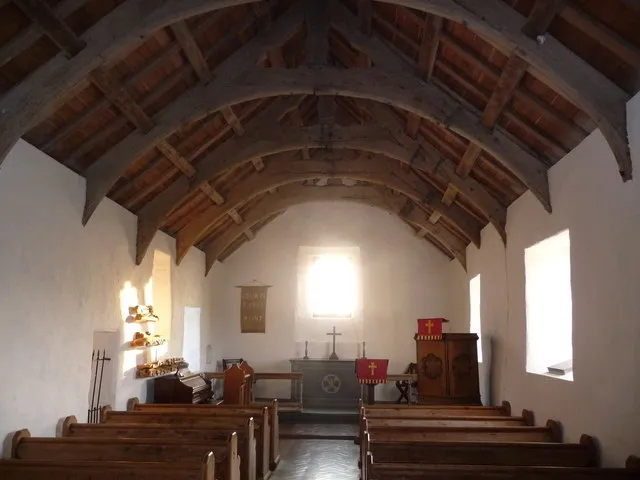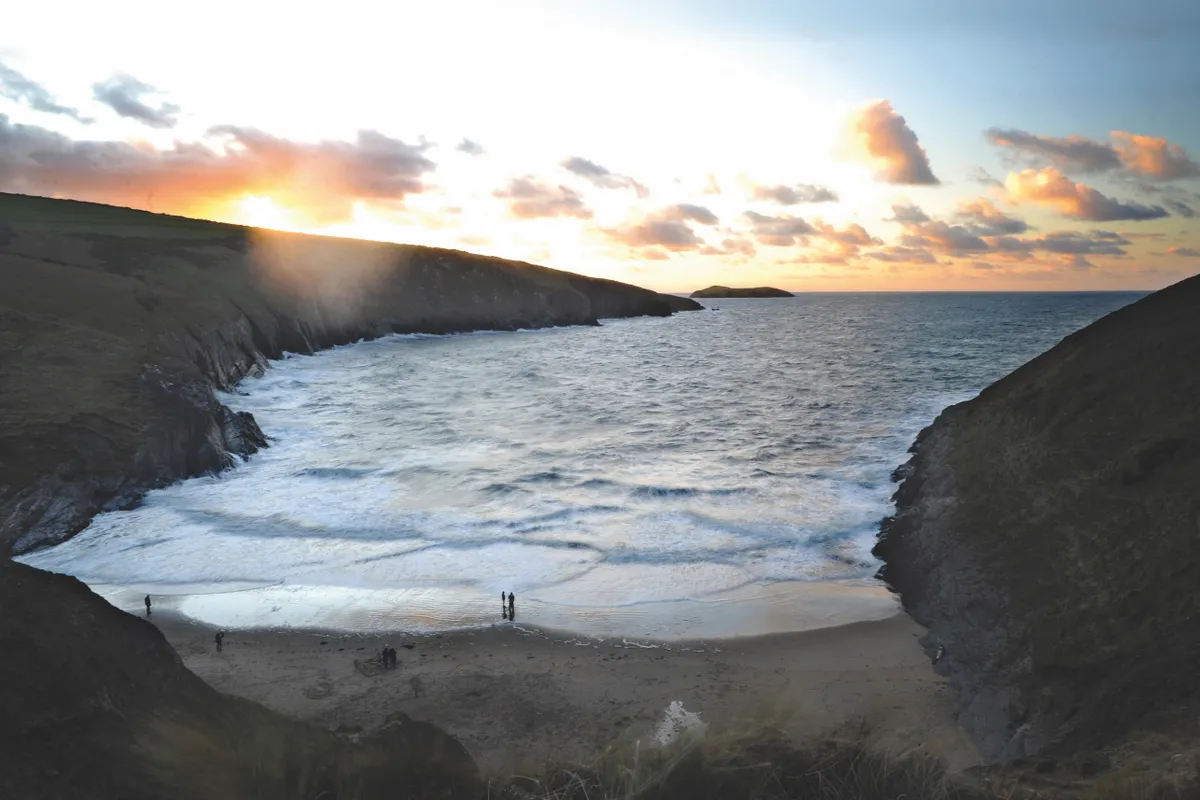Sometimes, between onslaughts of wind, you can hear the snort of an Atlantic grey seal in the turbulent waters below Foel-y-Mwnt, the prominent conical hill that rises above low-lying pasture and cliffs of clasts and boulder clay. Often, you see bottlenose dolphins. Kestrels hang poised in the air, and choughs kite-sail over the summit.
Sheltering from brutal south-westerlies beneath the hill is Eglwys y Grog, the Church of the Holy Cross. That it’s dedicated to a cross rather than a saint suggests antiquity. It’s possible that a stone cross once stood on Foel-y-Mwnt in the 5th or 6th century. It would have been clearly visible to the early Christians who travelled here in small wooden boats in search of wilderness and solitude, many of whom went on to found churches that bore their own names.

It’s likely that the present 14th-century building, visited by medieval pilgrims heading to Bardsey, Cardigan or St David’s in the footsteps of those primitive saints, replaced an earlier structure.
Christmas on the coast
Nowadays, in July and August when the beach is busy, bilingual services are held every Sunday, attended by holidaymakers and parishioners from the sister church in Y Ferwig. Eglwys y Grog is open to visitors every day of the year and, on Christmas Eve at 9pm, Holy Communion is held by candlelight.
You can walk there from Aberporth, branching off the Wales Coast Path to follow finch-flocked hedges across the fields where thrushes, fieldfares and redwings hustle for hips and hawthorn berries, before dipping into the valley at Mwnt.
The church is small and stoic with whitewashed, rubble-stone walls, the squat bell tower reminiscent of a Mediterranean chapel. Turfy ground, between the church and its surrounding enclosure, slopes to the top of the drystone walls, perhaps to let the sheep out but not in, though they tend to use the open gate. You can hear them munch the grass encroaching over the paving slabs. The sheep rub against the graves, some of which are neat and spruce, while others are splintered into shards.

Warped with age
Inside, the rich quietness seems louder than the sound of the wind, filtered through the stone walls and the hill. The 12th-century Preseli bluestone font is a simple square. The walls are white. The windows are clear, though some of the glass is warped with age, wobbling the landscape outside.
Like shipwreck timbers, fragments of a 15th-century rood screen are displayed on the wall. The remains of crudely carved figures once painted in red, blue, green and gilt, possibly saints or apostles, are still discernible. The softwood pews are smooth, speckled in places by woodworm, scored in places by penknives. The oak roof, with cusped king-post trusses, arches overhead like an upturned boat.
Outside, sheep shelter, and the wind shepherds clouds across the sky. Waves scud up the deep beach of clean brown sand where the early Christians landed.
Follow the winding coast path back to Aberporth, passing spectacular cliffs and outcrops, watching for red kites over brackened hills, and basking seals, while the sea rinses the rocks.
Main image ©Alamy
